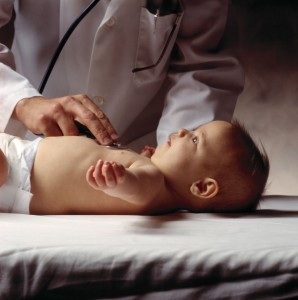Therapy for Brachial Plexus Injuries
 A brachial plexus injury is a life-long condition for many afflicted children. This delicate and intricate network of nerves controls feeling and movement in the shoulder, arm and hands and originates in the cervical spine. Any stretching, compression or tearing of the nerves may cause decreased sensation, limited mobility and paralysis in the extremities, depending on where the brachial plexus trauma occurred.
A brachial plexus injury is a life-long condition for many afflicted children. This delicate and intricate network of nerves controls feeling and movement in the shoulder, arm and hands and originates in the cervical spine. Any stretching, compression or tearing of the nerves may cause decreased sensation, limited mobility and paralysis in the extremities, depending on where the brachial plexus trauma occurred.
Adults who suffer damage to the brachial plexus typically do so in a bicycle/motor vehicle accident or extreme sporting activity that results in blunt trauma.
This condition is more frequently seen in newborns who suffer birth trauma during the delivery process. Statistics indicate that brachial plexus injuries occur in 1.5 out of every 1,000 live births in the United States, though it is unclear how many of these incidences can be traced back to medical negligence on the part of the birthing team.
This trauma is most common in the presence of shoulder dystocia, when doctors accidentally use too much force or traction in their efforts to free the baby’s shoulder during a vaginal delivery.
Symptoms & therapies for a brachial plexus injury
A brachial plexus injury is categorized into four types, depending on the severity and location of the damage. These include:
- Neuroma: Scar tissue has formed around the brachial plexus injury site, preventing normal signals from reaching the muscles.
- Neurapraxia: The nerve has been stretched.
- Rupture: The brachial plexus nerve is ripped, but not from the spinal cord.
- Avulsion: The most serious type where the nerve is torn away from the base of the spinal cord.
According to the Cincinnati Children’s Hospital, children with brachial plexus injuries may suffer from Erb’s Palsy (unstable shoulder, limited arm movement and bent wrist), Klumpke’s Palsy (affects the wrist and hand) and/or Global Palsy which is marked by no movement or feeling in the arm, hand and shoulder.
In some mild cases, a spontaneous or natural recovery is possible. Roughly 60 percent of children with brachial plexus palsy improve on their own with minimal intervention. Patients with rupture or avulsion injuries usually require timely surgical repair. Procedures vary from neurolysis (removing excess scar tissue) to nerve grafting and nerve and muscle transfers. Nerve repair is usually indicated when the child is between 3-6 months old.
For all types of brachial plexus trauma, complementary non-surgical treatment is an important part of the healing process. This often includes:
- Physical therapy
- Aquatic therapy
- Neuromuscular electric stimulation
- Kinesio Taping
- Joint Mobilization
Long-term outlook for children affected
The long-term prognosis for a child with brachial plexus injuries hinges upon the severity of the nerve damage and if therapy was started promptly. Nerves have an amazing capacity to regenerate, but only those which have been compressed or stretched, not completely torn. Ongoing symptoms of brachial plexus palsy may include limited sensation, muscle weakness, and partial to full paralysis of the arm and shoulder.
Day-to-day management focuses on keeping the affected joints and limbs flexible, helping the child adapt accordingly to his or her limitations and maintaining a supportive and positive attitude.
Fortunately, most children with mild neuropraxia injuries recover naturally with a 90 to 100% return of normal function.
- Mayo Clinic, Brachial Plexus Injury http://www.mayoclinic.org/diseases-conditions/brachial-plexus-injury/home/ovc-20127336
- Johns Hopkins Medicine, Brachial Plexus Injury (BPI) http://www.hopkinsmedicine.org/neurology_neurosurgery/centers_clinics/peripheral_nerve_surgery/conditions/brachial_plexus_injury_bpi.html
- Cincinnati Children’s Org. Brachial Plexus Injury http://www.cincinnatichildrens.org/health/b/brachial-plexus/

 Resources
Resources
 Resources
Resources

